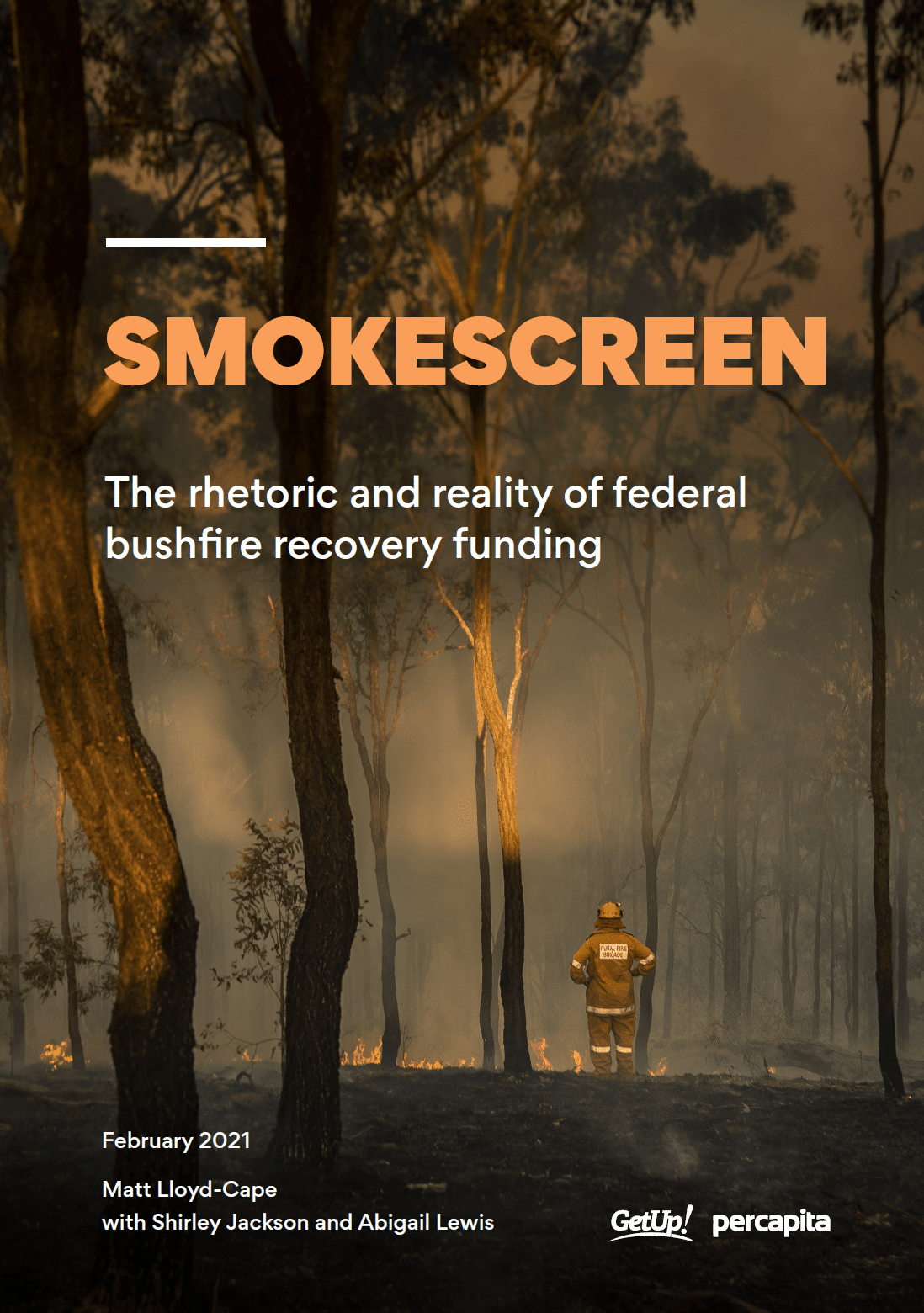This report examines the allocation and distribution of federal funds from 1 January 2020 to 31 December 2020, following the bushfire crisis of 2019-2020. While large pledges were made to support families and businesses, much of the funding appears to be unspent, or seems to have been allocated based on political motivation rather than need. There is a significant lack of transparency surrounding application procedures and how funds are allocated, and poor reporting mechanisms which make it hard to know how much has been spent, how many people are still in financial need, and in what timeframe they can expect to be supported.
Less than half the promised funds have been released by the Federal Government.
The Federal Government has announced $2.74 billion in bushfire funds in the last 12 months. However, we estimate that only $1.3 billion had been spent by 31 December 2020, around 48% of the promised total.
The amounts spent under different fund categories ranges significantly, but the major economic and social funds, and individual support payment funds are estimated to be between 43% and 64% spent. This shortfall is partly explained by the scheduling of spending over several years, and by the length of time required to assess and sign off projects under the economic recovery fund, which is released in stages.
However, there is clear evidence of multiple failures of process in allocating funds directly to survivors, as well as of the redirection of funds to other purposes, resulting in people desperately in need of support waiting for months to receive help.
Promised funds are not reaching families in need fast enough
Providing funds to families in need is happening at a snail’s pace. The Disaster Recovery Payments and Allowances (DRP/DRA), which are intended to support people through the short-term effects of losing homes and assets to the fires, have been distributed painfully slowly. At the current rate, it will take until nearly 2023 to distribute the funds – three years after the fires.
The distribution of Economic Recovery Funds appears to favour LNP states and seats
The Local Economic Recovery and Complementary Projects (LERCP) funds are intended to help communities rebuild their economy after the fires. So far 86% of LERCP funds have gone to the Liberal-governed states of New South Wales and South Australia, with only 14% going to Labor-governed Victoria and Queensland.
The Federal Government has failed on transparency and accuracy
Considering the level of national importance these funds hold, government transparency over them is severely lacking. In addition, there are multiple accounts of Federal Government ministers misrepresenting the scale of the funding and the speed of delivery.
The $2 billion fund for the National Bushfire Recovery Agency is notional only
Senior civil servants have confirmed that the $2 billion allocated to the National Bushfire Recovery Agency is notional only; a theoretical description of a number of different pots of money, some new and some redirected from other government programs.
The amount spent is a tiny fraction of the total cost of the 2019-2020 bushfire season
Academics and economists have estimated the total costs of the 2019-2020 bushfires are as high as $100 billion, meaning only 1.5% of what was needed has been promised – and not even half of that has been spent.
Our emergency funding systems are unprepared for the next crisis
Increasingly frequent, dangerous, and costly climate disasters are a reality, and are being exacerbated by the Federal Government’s inaction on climate change. The Federal Government is not prepared for worsening climate impacts in terms of its recovery processes.

